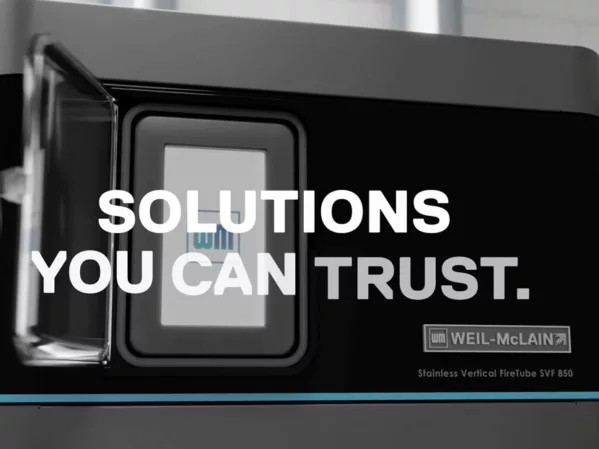Energy efficiency measures tend to focus on HVAC and electrical installations, but there are also significant opportunities to save energy in plumbing design. Although water conservation is not commonly presented as an energy efficiency measure, its savings extend beyond the water bill. When building owners conserve water, they also avoid the associated pumping and heating costs.
To optimize the efficiency of a plumbing installation, the first step is designing the system for minimal water consumption. Plumbing fixtures with the WaterSense label from the U.S. Environmental Protection Agency (EPA) are very useful for this purpose, since they achieve water savings of 20 percent or more with respect to the federal baseline.
Additional efficiency gains are possible when selecting motors for pumping systems and water heaters. While water conservation minimizes the workload on these systems, an energy-efficient design reduces the pumping and heating expenses per each gallon of water.
Water Conservation with Low-Flow Plumbing Fixtures
The U.S. EPA only approves the WaterSense label when plumbing fixtures have passed a testing procedure by an independent laboratory. Therefore, manufacturers cannot certify and label products on their own, and this makes the WaterSense program neutral.
As of March 2019, the WaterSense label covers eight categories of plumbing fixtures: residential toilets, showerheads, bathroom faucets, commercial toilets, urinals, pre-rinse spray valves, irrigation controllers, and spray sprinkler bodies.
Residential toilets represent a significant opportunity to conserve water, since they account for 30 percent of water consumption in U.S. households. While the federal baseline for toilets is 1.6 gallons per flush, a WaterSense toilet only uses 1.28 gallons per flush. Older toilets that have not been replaced in a long time have a much higher water consumption, using up to 6 gallons per flush.
Showerheads also consume plenty of water, representing 17 percent of residential consumption. The federal standard for showerheads is 2.5 gpm, but a WaterSense product has a maximum flow of 2.0 gpm. To complement a toilet and shower upgrade, labeled bathroom faucets with aerators can reduce water usage from 2.2 gpm to 1.5 gpm per faucet.
WaterSense plumbing fixtures can also achieve significant savings in the commercial sector. Commercial toilets and urinals with the label only consume 1.28 gpf and 0.5 gpf, respectively, while the standard values are 1.6 gpf and 1.0 gpf. In food service applications, pre-rinse spray valves with WaterSense labels reduce water consumption from 1.6 gpm to 1.28 gpm.
Detecting and repairing leaks is very important for water conservation in existing properties. According to the U.S. EPA, water leaks waste 10,000 gallons per year in the average U.S. household.
Improving the Efficiency of Pumping Systems
As previously mentioned, water conservation reduces the workload on pumping systems. However, additional savings are achieved when pumps are designed to operate as efficiently as possible. While water conservation reduces the number of gallons pumped, energy efficiency measures for pumps reduce the cost of delivering each gallon to the point of use.
Water pumps are normally driven by electric motors, and in many cases they operate all day long. For this reason, even a slight increase in motor efficiency can achieve significant savings throughout the year. NEMA Premium Efficiency motors offer the highest efficiency in the industry, and their rating is independent from specific manufacturers, just like the WaterSense label.
Since building water consumption is constantly changing, pumping systems are subject to a variable workload. Their full pumping capacity is only needed during peak demand hours; in a multifamily building, for example, showering and cooking increase water consumption in the early morning. Valves have been the traditional pump control solution, but they cause hydraulic losses when water flows through; a more efficient alternative is using a variable frequency drive to control the impeller speed and adjust flow according to demand.
To summarize, a NEMA Premium Efficiency motor with a variable frequency drive offers the most efficient way to drive a pump, achieving a variable speed pumping system. An adequate voltage supply is important to ensure that the motor operates at rated efficiency; undervoltage is detrimental for motor performance, as well as voltage imbalance in three-phase power supplies.
Energy Efficiency in Water Heating Systems
As previously mentioned, water heating is another major energy expense that can be reduced with water conservation. However, like in the case of pumps, further savings are possible if the water heating system is designed as efficient as possible.
The efficiency of water heaters is specified by the energy factor (EF), which describes how much heat is delivered to the water per unit of energy consumed. The advantage of the EF is that it considers not only heat transferred to the water, but also standby losses and circulation losses. Water heaters that rely on fossil fuel combustion or electric resistance always have an EF below unity, but heat pump units typically have an EF above 2.
Water heaters can also be classified as instantaneous or storage heaters. As their names imply, storage heaters accumulate hot water in a tank, while instantaneous heaters raise the temperature of water as it flows through. Storage heaters tend to be less efficient due to standby losses, but they can continue delivering hot water when their heat source is unavailable.
Typically, the lowest water heating costs can be achieved with a heat pump or an instantaneous gas heater. When both options are compared in terms of cost, the results can vary depending on local electricity and gas tariffs. However, heat pumps do not produce local emissions like gas heaters, and they include a storage tank that serves as backup.
Heat pumps can achieve synergy with solar power when a building is equipped with both technologies. Photovoltaic systems have become very affordable, but their surplus energy output is normally exported to the local grid, and many power companies do not credit exported electricity at the retail price. However, if a heat pump water heater is present, surplus solar generation can be used to store hot water. Even if the demand for hot water is low when there is surplus solar production, a well insulated tank can conserve its temperature for later use.




